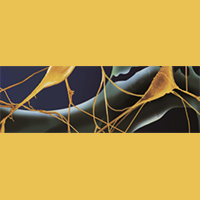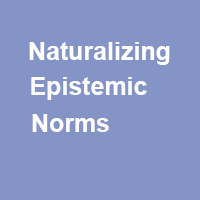A LA UNE
Entretien avec Alain de Cheveigné
Alain de cheveigné (Laboratoire des Systèmes Perceptifs) a reçu un financement du programme H2020 pour le projet COCOHA (Cognitive Control of a Hearing Aid).

Peux-tu nous parler de ton parcours avant ton arrivée au sein de l'équipe Audition du LSP ?
Ma formation et mon parcours sont assez interdisciplinaires. J'ai suivi des études de Physique, Mathématique et Electronique à Paris, et ma thèse portait sur la Phonétique expérimentale. J'ai ensuite passé deux ans au Département d'Informatique de l'Université de Kyoto au Japon, où je suis retourné régulièrement, principalement à l'institut ATR. Avant de devenir chercheur professionnel, j'ai travaillé en tant qu'éclairagiste dans des théâtres et en tant qu'informaticien. Je suis aujourd'hui en poste au CNRS à l'ENS à Paris. Je suis également titulaire d'une position honorifique à University College London. Avant d'arriver à l'ENS, j'ai travaillé à l'Ircam (Institut de Recherche et Coordination Acoustique/Musique), institut dédié à la recherche et la création musicale contemporaine, et avant cela j'étais au Département de Linguistique de l'Université Paris Diderot. Sur le plan scientifique, j'ai travaillé sur la perception de la hauteur et du timbre ainsi que sur l'analyse de scène acoustique. Plus récemment, mes travaux ont porté sur de nouvelles méthodes de traitement de signaux cérébraux, qui seront, je l'espère, utiles pour notre nouveau projet. C'est la science qui m'intéresse, comprendre le fonctionnement des choses, et plus particulièrement la transformation de ce savoir en quelque chose d'utile. Je crois que ces points sont indissociables. Cela ne veut pas dire que je favorise une approche "dirigée à l'application" de la recherche : les moyens par lesquels notre savoir est appliqué au monde réel sont souvent indirects, et la recherche fondamentale est le moyen le plus sûr de concevoir de nouvelles solutions. C'est pourquoi je suis si content du financement de ce nouveau projet: il démontre bien le lien entre la recherche fondamentale et les applications effectives.
Le LSP est composé de deux équipes: l'équipe Audition et l'équipe Vision. Peux-tu nous présenter le LSP et l'équipe Audition ?
Notre laboratoire est né de la convergence de deux équipes: Vision et Audition. Toutes deux sont basées sur la psychophysique sensorielle, avec un intérêt important pour la théorie et les modèles de perception et pour les homologues d'ingénierie de ces modèles. Nous nous intéressons à la perception de traits de bas niveau tels que le ton, à des compétences plus complexes telles que la perception de la parole et plus généralement à des questions telles que la mémoire sensorielle, l'attention, la plasticité, l'analyse de scène, le codage prédictif, etc. L'arrivée de Shihab Shamma de l'Université de Maryland a ouvert une nouvelle dimension d'investigation qui comprend le comportement animal et humain et l'électrophysiologie. Nous avons cultivé d'importants liens avec le monde clinique et avec l'industrie des implants cochléaires et des appareils auditifs, ce qui donne une bonne base au projet COCOHA.
Tu coordonnes le projet européen COCOHA. C'est un projet très ambitieux puisqu'il s'agit de créer une prothèse auditive intelligente. Peux-tu nous présenter ce projet ?
Le projet COCOHA se résume en trois mots: un besoin, une opportunité et un défi. Des millions de personnes ont des difficultés à communiquer dans des environnements bruyants, en particuliers les personnes âgées : 7% de la population européenne est atteinte d'une déficience auditive. Les appareils auditifs peuvent aider de façon efficace dans le cas d'une perte de sensibilité, mais ne peuvent pas restaurer la capacité qu'a une paire de jeunes oreilles à identifier une voix faible parmi d'autres, chose importante pour une communication sociale efficace. C'est cela le besoin. L'opportunité réside dans le fait que des progrès majeurs ont déjà été faits dans le domaine de l'analyse de scène acoustique: réseaux de microphones et algorithmes de filtrage spatial (beamforming), ou encore des réseaux distribués d'appareils portables tels que les smartphones destinés à améliorer le ratio signal-sur-bruit de sources sonores faibles. Certaines de ces technologies existent depuis un certain temps, et sont même intégrées dans des appareils auditifs commerciaux. Cependant, leur succès reste limité pour une raison simple: il n'y a aucun moyen de “diriger” l'appareil, de lui dire de focaliser son traitement sur une seule source parmi d'autres. Le projet COCOHA propose l'utilisation de signaux cérébraux (EEG) pour diriger l'analyse de scène acoustique--étendant effectivement les voies neuronales efférentes qui contrôlent toutes les phases de traitement du cortex à la cochlée--pour gouverner également l'appareil externe. Pour réussir, il nous faudra surmonter des défis techniques majeurs: l’utilisation des méthodes du traitement de signal acoustique ou encore l'apprentissage automatique venant du domaine des interfaces cerveau-machine. Au passage nous aborderons des questions scientifiques intéressantes liées à l'attention, aux corrélats électrophysiologiques de la stimulation sensorielle et de la dynamique intrinsèque du cerveau, à la structure du son, et à celle des signaux cérébraux. C'est en cela que consiste le défi.
Site web du LSP: www.iec-lsp.ens.fr
Site web du projet COCOHA: http://audition.ens.fr/cocoha/
QUELQUES PUBLICATIONS RECENTES
Nicolas Baumard, Alexandre Hyafil, Ian Morris, Pascal Boyer. Increased Affluence Explains the Emergence of Ascetic Wisdoms and Moralizing Religions. Current Biology. December 11, 2014
Abstract:
Background
Between roughly 500 BCE and 300 BCE, three distinct regions, the Yangtze and Yellow River Valleys, the Eastern Mediterranean, and the Ganges Valley, saw the emergence of highly similar religious traditions with an unprecedented emphasis on self-discipline and asceticism and with “otherworldly,” often moralizing, doctrines, including Buddhism, Jainism, Brahmanism, Daoism, Second Temple Judaism, and Stoicism, with later offshoots, such as Christianity, Manichaeism, and Islam. This cultural convergence, often called the “Axial Age,” presents a puzzle: why did this emerge at the same time as distinct moralizing religions, with highly similar features in different civilizations? The puzzle may be solved by quantitative historical evidence that demonstrates an exceptional uptake in energy capture (a proxy for general prosperity) just before the Axial Age in these three regions.
Results
Statistical modeling confirms that economic development, not political complexity or population size, accounts for the timing of the Axial Age.
Conclusions
We discussed several possible causal pathways, including the development of literacy and urban life, and put forward the idea, inspired by life history theory, that absolute affluence would have impacted human motivation and reward systems, nudging people away from short-term strategies (resource acquisition and coercive interactions) and promoting long-term strategies (self-control techniques and cooperative interactions).
Science mag
Stéphane Buffat, Véronique Chastres, Alain Bichot, Delphine Rider, Frédéric Benmussa, and Jean Lorenceau.
OB3D, a new set of 3D objects available for research: a web-based study. Front. Psychol., 06 October 2014
Abstract:
Studying object recognition is central to fundamental and clinical research on cognitive functions but suffers from the limitations of the available sets that cannot always be modified and adapted to meet the specific goals of each study. We here present a new set of 3D scans of real objects available on-line as ASCII files, OB3D. These files are lists of dots, each defined by a triplet of spatial coordinates and their normal that allow simple and highly versatile transformations and adaptations. We performed a web-based experiment to evaluate the minimal number of dots required for the denomination and categorization of these objects, thus providing a reference threshold. We further analyze several other variables derived from this data set, such as the correlations with object complexity. This new stimulus set, which was found to activate the Lower Occipital Complex (LOC) in another study, may be of interest for studies of cognitive functions in healthy participants and patients with cognitive impairments, including visual perception, language, memory, etc.
Website: http://ob3d.scicog.fr
Andrew Martin, Thomas Schatz, Maarten Versteegh, Kouki Miyazawa, Reiko Mazuka, Emmanuel Dupoux, and Alejandrina Cristia Mothers Speak Less Clearly to Infants Than to Adults: A Comprehensive Test of the Hyperarticulation Hypothesis. Psychological Science - 2015
Abstract:
Infants learn language at an incredible speed, and one of the first steps in this voyage is learning the basic sound units
of their native languages. It is widely thought that caregivers facilitate this task by hyperarticulating when speaking to
their infants. Using state-of-the-art speech technology, we addressed this key theoretical question: Are sound categories
clearer in infant-directed speech than in adult-directed speech? A comprehensive examination of sound contrasts in a
large corpus of recorded, spontaneous Japanese speech demonstrates that there is a small but significant tendency for
contrasts in infant-directed speech to be less clear than those in adult-directed speech. This finding runs contrary to
the idea that caregivers actively enhance phonetic categories in infant-directed speech. These results suggest that to be
plausible, theories of infants’ language acquisition must posit an ability to learn from noisy data.
Pieron M, Seassau M, Leboyer M, Zalla T.. Accelerated time course of saccadic inhibition of return in individuals with autism spectrum disorders. Exp Brain Res. 2014 Nov 30. PMID: 25432625
Abstract:
The inhibition of return (IOR) refers the observer's slower response time when the target stimulus appears on the previously attended location. In the present study, we examined the time course of saccadic IOR by using five stimuli onset asynchronies (SOAs) in a group of adults with autism spectrum disorders (ASDs) and a comparison group. The results showed that the IOR effect occurred earlier (300 ms SOA) in participants with ASDs, relative to the comparison participants (500 and 700 ms SOAs). The ASD group also committed a greater number of anticipatory saccades, which positively correlated with scores on restricted and repetitive behaviors, as assessed by the Autism Diagnostic Interview-Revised (ADI-R; Lord et al. in J Autism Dev Disord 24:659-685, 1994). These findings reveal an accelerated time course for saccadic IOR along with diminished volitional oculomotor control in participants with ASDs. We discussed these results with reference to the atypical and the superior visual search abilities often reported in this population.
Zalla T, Miele D, Leboyer M, Metcalfe J.. Metacognition of agency and theory of mind in adults with high functioning autism.Conscious Cogn. 2014 Dec 4; 31C:126-138.
Abstract:
We investigated metacognition of agency in adults with high functioning autism or Asperger Syndrome (HFA/AS) using a computer task in which participants moved the mouse to get the cursor to touch the downward moving X's and avoid the O's. They were then asked to make judgments of performance and judgments of agency. Objective control was either undistorted, or distorted by adding turbulence (i.e., random noise) or a time Lag between the mouse and cursor movements. Participants with HFA/AS used sensorimotor cues available in the turbulence and lag conditions to a lesser extent than control participants in making their judgments of agency. Furthermore, the failure to use these internal diagnostic cues to their own agency was correlated with decrements in a theory of mind task. These findings suggest that a reduced sensitivity to veridical internal cues about the sense of agency is related to mentalizing impairments in autism.
AGENDA

3 février 2015
Colloquium du DEC - Wolfgang Prinz: "The roots of subjectivity"
En savoir plus...

3 février 2015
Katarina Gvozdic (Univ. de Vincennes, Paris 8): "Folk Pedagogy: what it is, why it counts".
En savoir plus...

4 février 2015
Benjamin Spector (CNRS, IJN): "Decomposing knowledge"
En savoir plus...

5 février 2015
Léa-Cécile Salje (University college London): "Thinking about you"
En savoir plus...

11 février 2015
Michael Murez (IJN)
En savoir plus...

18 février 2015
Blazej Skrzypulec (IJN, Jagiellonian university, Krakow): "Visual objects and their identity conditions"
En savoir plus...

23 février 2015
Pascal Ludwig (Université Paris-Sorbnne): "Attention and phenomenal knowledge"
En savoir plus...

24 février 2015
Nicolas Gauvrit (Université d'Artois, Université Paris 8): "Les enfants surdoués dorment bien la nuit"
En savoir plus...

27 février 2015
Arik Kershenbaum (University of Cambridge): ""If birds could talk... would we notice?""
En savoir plus...
Retrouvez l'agenda du DEC sur le site internet du département.
Retrouvez le programme, les archives et les enregistrements audio du colloquium du DEC sur le site du département.
